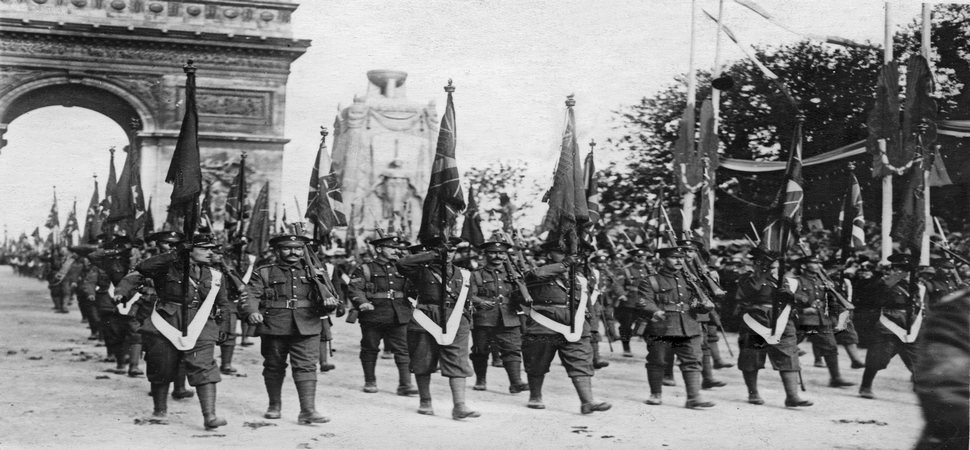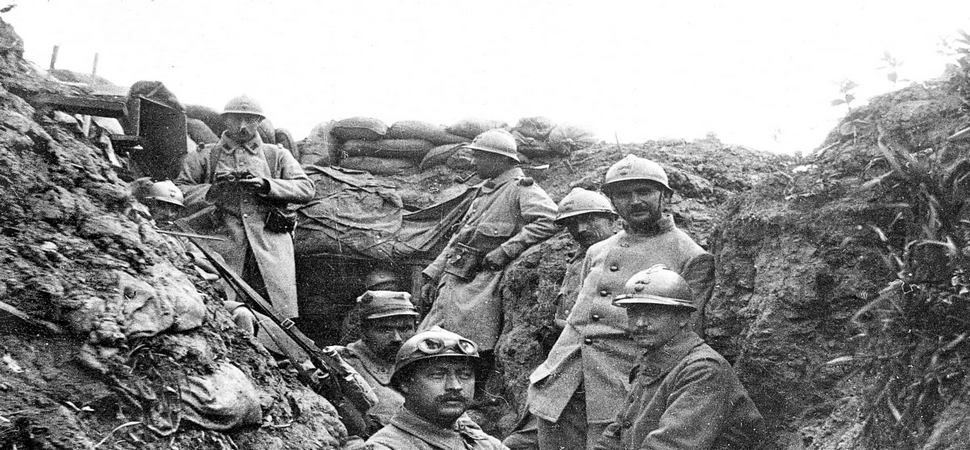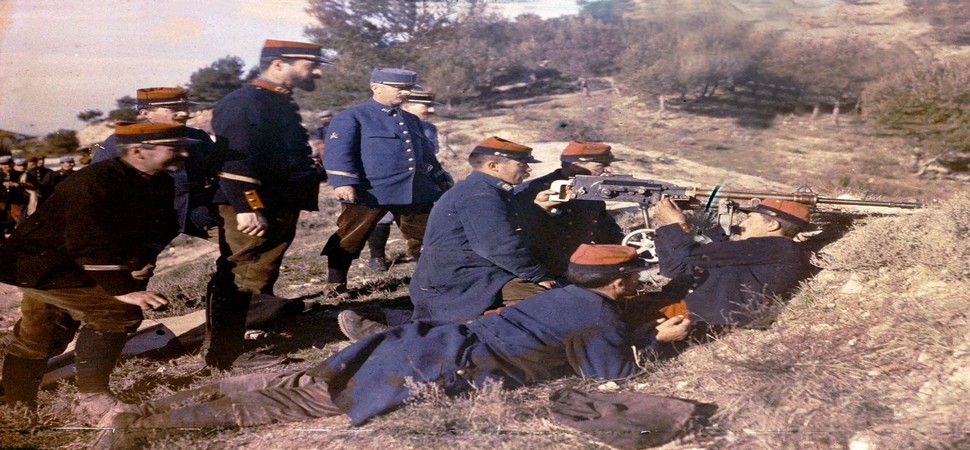23.09
Share ArticleStrategies and Methods of French Propaganda during World War
What do political propaganda, charlatans, financial swindlers, etc. have in common? In fact, they all use the same methods of manipulation to date. These are exaggeration, fudging the facts in a certain way, hiding facts, and others. The selection of French propaganda during WWI is useful because it is very well researched thanks to historians, propaganda experts and declassified documents. After reading our article, you will be able to recognize even the most skillful manipulation.
During World War I, French propaganda played an important role in maintaining the morale of the population and soldiers, and in strengthening public opinion in favor of continuing the fighting.

The state realized the importance of the information front from the beginning of the conflict, and mobilizing resources to wage information warfare against the enemy as well as to strengthen internal unity became a key task. The basic principles of French propaganda of the period centered around a few key aspects.
French propaganda strategy
The priority of French propaganda was to demonize the enemy, especially Germany. Visual and textual materials portrayed the Germans as cruel and inhuman aggressors devoid of moral values. Famous cartoons and posters distributed throughout the country portrayed Kaiser Wilhelm II as a barbarian who wanted to destroy civilization. Such demonization helped justify the sacrifices made by the French on the battlefield, as well as increasing hatred of the enemy, which played a key role in maintaining national resolve.
Also an important element of French propaganda was the glorification of its own troops. The media and government agencies portrayed French soldiers as heroes defending freedom and democratic values. There was an active effort to create the image of a soldier devoted to duty and ready to give his life in defense of his homeland. These images inspired the civilian population, creating an illusion of the strength and invulnerability of the French army. The stories of individual heroes who, through their bravery and selflessness, epitomized the entire French nation were often used.

One of the most important areas of propaganda was the handling of emotions. French propaganda actively appealed to feelings of patriotism and responsibility to future generations. Many posters and leaflets contained images of women and children who were in danger if the enemy was defeated. A picture was created in which citizens felt their contribution to the common cause - everyone who stayed at home was also a participant in the war, contributing to the victory. This helped to maintain the moral unity of the nation.
The French government also actively used censorship to control the flow of information. Special agencies were created that monitored publications in the press, screening out all negative and demoralizing news. Reports from the front were carefully selected to minimize the impact on public opinion, especially during periods of heavy casualties. Anything that could weaken the will to fight or sow doubts about ultimate victory was strictly controlled. This helped to create a unified and positive information space.
French propaganda also sought to gain the support of the Allies. France actively used the image of a defender of democracy and freedom, which helped to strengthen its international position. In particular, special attention was paid to the support of the United States, which, as one of the key countries on the world stage, had a huge influence on the outcome of the war.
The example of the Battle of Verdun
The Battle of Verdun, or, as it is also called, “meat grinder”, became one of the bloodiest moments of the First World War, which, in turn, in terms of bloodshed is second only to the Second World War. The fact is that according to the plans of both sides, this battle was to decide the outcome of the war, so all forces were thrown to this section of the front. Nevertheless, at the most difficult moment of the Battle of Verdun, French General Joffre and other military functionaries argued fiercely about what adjectives and verbs should be in the press release.
The situation was complicated by the fact that the Germans had launched a major offensive. French positions were not defended. Trenches and other defenses had not been dug, roads and even barbed wire were missing. The French General Staff clearly did not expect such an offensive and was pessimistic about the results of the battle, so on February 23, 1916 at a meeting General Joffre and his colleagues and adjutants discussed and issued a press release. The purpose was to prepare the French public for defeat.

To put it in modern terms, one theory was that Germany had tried to win the war with this battle and had let it go, so the French retreat was unsurprising. General Pellet decided to add the phrase “as expected” to the press release to lend plausibility and try to cover up the failure of the French military command. In addition to preparing French and world society for a possible failure, the task was to simultaneously try to boost morale.
The tragicomedy surrounding Fort Douaumont
The German General Staff claimed that their army had stormed Fort Douaumont. In turn, the French General Staff did not understand how this had happened. First, they had no information about it and, like the rest of the world, learned about it from the Germans. Secondly, the French had a numerical advantage, and according to military science for a successful assault on enemy positions must be an advantage in manpower 3 to 1 in favor of the attackers. For the storming of fortifications it should be even greater. As it turned out later, chaos and confusion reigned in the orders, so the fort was abandoned by the French without a fight. Only the commander of the artillery battery and a few other men were inside the fort. The gates of the fort were open.
Since the French General Staff did not understand what was going on and needed to reassure the public, a completely false scenario of a non-existent battle was invented on the fly, which did not correspond to the German version, nor to the real state of affairs, which was established by an independent investigation. We suggest you read the original press release and have a laugh:
“A heavy battle is unfolding around Fort Douaumont, which is the forward post of the old Verdun defense system. The position which the enemy succeeded in taking this morning, after several unsuccessful assaults which brought him heavy losses, was recaptured by our troops, who then advanced further and consolidated in new positions.”
Conclusions
French propaganda during World War I, while powerful and effective, was not flawless and had its flaws. The images created of the enemy and the glorification of their own troops, while boosting morale, sometimes went overboard and helped to incite hatred and prejudice. This, in turn, may have made post-war reconciliation and the restoration of relations between countries more difficult.

Dealing with emotions and patriotism helped to maintain unity and motivate the population, but it also created high expectations and pressures that did not always match the reality of combat conditions. Censorship, while necessary to control the flow of information, sometimes limited the objectivity of the information presented, which could lead to citizen distrust when faced with contradictions between official reports and reality.
Reviews